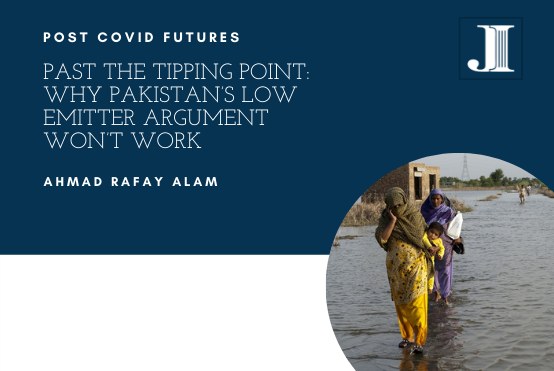Post COVID Futures
Chapter 2: Past the Tipping Point: Why Pakistan’s Low Emitter Argument Won’t Work
by: Rafay Alam
Date: August 4, 2021
July’s flash flood in Islamabad was triggered by a “cloudburst” that swept cars away in high tide across an affluent neighbourhood, and killed two persons. For a city that prides itself for keener urban design, planning and resources to expend, the monsoon levelled the national capital with lesser cities in Pakistan, and served a reminder that climate induced stress will be universal afterall. It also confirmed that climate vigilance needs to be a constant exercise to prevent disaster and inform adaptive practice.
July 2021 was a month of extreme weather events across the globe: catastrophic flooding in Europe, China and India; heatwaves and drought in North America; and wildfires in the remote subarctic. Climate data had predicted these scenarios with increased global warming, but the speed and scale at which the summer of 2021 is erupting into continental disasters has taken aback experts working with the data. These are clearly compound events, with interconnections between them and surpass systemic capacities to cope in almost all cases.
Decisionmakers in Pakistan and elsewhere are reverting their attention from COVID emergencies to the climate crisis, and for good reason. With COP-26 scheduled in a few months from now, evaluating the climatic events of this year in relation to policy progress is essential to gauge where we stand. Pakistan’s climate policy roadblocks have not gone away, although there have been commendable initiatives that make qualitative improvements to the environment. This policy brief assesses these initiatives in relation to Pakistan’s overall position at UNFCCC, and makes a case for recasting our domestic climate priorities in consonance with federal and provincial implementation mandates.

